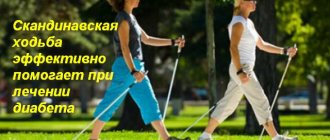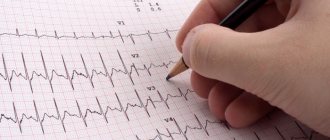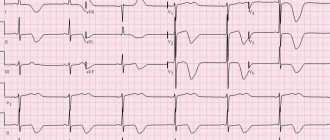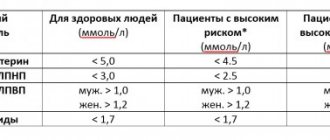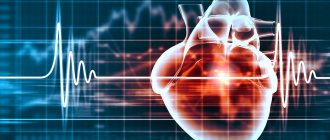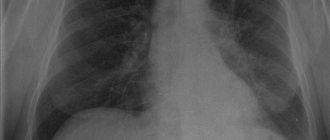In the 21st century, medicine has reached its highest development and is successfully coping with many ailments. However, the number of people with problems of the cardiovascular system is not decreasing, and heart diseases such as ischemia, angina, and myocardial infarction still rank high on the list of the most common diseases. And the most surprising thing is that physical therapy for diseases of the cardiovascular system still remains one of the most effective methods of their prevention and treatment.
Correct performance of exercise therapy
If a patient is prescribed a complex of exercise therapy for a disease of the cardiovascular system, he must know the rules for its implementation. The list is as follows:
- With CVD of any degree, patients should not quickly and inadequately increase the load during exercise therapy, even if the patient feels generally well.
- Classes are held no earlier than 1.5-2 hours after the patient has eaten.
- When performing therapeutic physical activity, you need to monitor your condition. If negative manifestations such as shortness of breath, dizziness, pain in the heart area occur, then you should stop doing the exercises.
- While performing gymnastics, the pulse is monitored. With the positive impact of exercise therapy and its proper implementation, the pulse increases by 20-36 beats and does not exceed 120 beats per minute. After a 5 minute rest it returns to normal. Such indicators indicate that the load is chosen correctly and the exercises are beneficial.
Recommended set of exercises
To begin with, we will present a set of standard physical exercises that allow you to optimize the respiratory cycle, ensure blood flow to vital organs, and restore the tone of the arteries and veins. Physical therapy doctors recommend these exercises to almost all patients whose general condition is satisfactory for daily performance at home.
Exercise No. 1. Starting position – lying on your back. The head and neck are relaxed. You need to raise your arms straight in front of you and then lower them down through your sides. First repeat no more than 5-8 times.- Exercise No. 2. Starting position – lying on your back. You need to raise your lower limbs bent at the knees (to an acceptable angle), and then straighten them (again, to an acceptable position). Lower your legs straight. Start with 4-5 times.
- Exercise No. 3. From the starting position lying down, sit up using your hands. Then lie down again and sit up without using your hands. Repeat this alternation of lifts 3 times.
- Exercise No. 4. Starting position – sitting. The neck is straight, the gaze is directed forward. Bend your arms at the elbows, with your hands on your shoulders. Next, make circular movements, 5-7 times forward and 5-7 times back.
- Exercise No. 5. Starting position – sitting. Taking a deep breath, one lower limb, bent at the knee, is pressed against the stomach. As you exhale, it lowers. Then do the same movements with the other leg. And so, alternately raising the lower limbs, perform the movement 10 times.
- Exercise No. 6. Starting position – standing. Feet should be placed firmly, shoulder-width apart. And then perform wide circular swings with your arms, stitching in one direction and then in the other. Perform 3-5 swings.
Exercise No. 7. Next, being in the same position, raise your arms above your head and clasp them together. Turn your palms outward and step one leg back. As you exhale, return it. Repeat with the other leg and, alternating lower limbs, complete 10 sets.- Exercise No. 8. You can complete the complex with an active warm-up exercise. Walk around the room slowly for up to 1 minute, then walk quickly for 2 minutes. Next - 2 minutes of slow walking on your toes, and then - 1 minute of active walking with high knees (to a comfortable level).
Contraindications
Doctors do not establish a categorical ban on therapeutic movements for problems with the cardiovascular system, but they do issue recommendations on reducing stress under certain factors. Relative contraindications include:
- Do not perform exercises for the cardiovascular system with tension and holding your breath if they are accompanied by an increase in intrathoracic pressure. This reaction can cause high blood pressure and interfere with normal blood flow;
- Do not use sudden and forceful movements, high-speed exercises that cause increased blood circulation during cardiological training;
- Do not attach a high emotional background and spirit of competition to classes. Physical therapy should not resemble a sports game;
- Calculate the load based on the degree of disease and the age of the patient.
Note!
For any contraindications, you can consult your doctor. The specialist will distribute the load into stages and help you choose the individual optimal option.
Exercise therapy for acquired heart defects
The main focus of training for acquired heart defects is to restore the patient’s functional state to the required level. As is the case with people suffering from heart valve pathologies, exercises aimed at increasing endurance are used here. A person with an acquired defect cannot immediately begin aerobic training, because high risk of heart attack. The intensity of exercise should be slightly below the threshold level.
Gymnastics in the treatment of coronary heart disease
A person admitted to a hospital with coronary artery disease in the acute stage is recommended to carry out therapeutic exercises from the second day of his stay, provided that the patient’s condition is currently stable. The complex consists of breathing training and exercises necessary to load certain muscles.
During treatment, if the doctor finds no contraindications, a submaximal test is performed to determine the optimal degree of exercise therapy for a given patient. If the pulse rate exceeds (more than 120 beats) and the patient is generally intolerant of the proposed loads, the test is stopped. To further continue the exercises, the heart rate recorded at the final stage of the test is taken as a basis.
When performing rehabilitation exercises, the patient should ensure that the pulse does not exceed 75% of its threshold value. At home, you can do morning exercises, walking and moderate exercise on an exercise bike are beneficial. Once you get used to these loads, you can then move on to jogging, cycling and swimming.
Exercises included in the exercise therapy complex for ischemia
If you have CVD, you shouldn’t strain yourself too much in physical movements and do everything quickly. The exercise therapy complex for ischemia includes the following movements:
- At the beginning of the lesson, you need to put a chair, stand over its seat, place your hands on your belt. Inhaling, take them to the sides, exhaling, return them to the belt. Movements should be slow and breathing should be even. Do this 4-6 times.
- From the same IP we inhale, raise our arms up, then, as we exhale, bend forward. Adhering to an average pace, we do 5-7 times.
- We place our hands in front of the chest, inhale, spread them to the sides, return them at a slow pace to the starting position, exhale. Slowly repeat 4-6 times.
- Holding the back of the chair, we begin squats. We did a squat, exhaled, and straightened up as we inhaled. It must be performed at a slow, measured pace. 3-4 times are enough.
- We sit down on a chair. We raise our right leg, bending it at the knee, and make a clap under the knee. We perform the same movement with our left foot. We work 3-5 times with each leg.
- We sit on a chair, do squats in front of the chair, sit down again, try to breathe without delay. We do 5-7 repetitions.
- We remain sitting, try to straighten our legs, stretch our arms forward. Now, bending the lower limbs at the knees, we place our hands on the belt. At an average pace, we do this 4-6 times.
- Let's get up. Starting with either leg, we move it back, arms are at the top, inhale. Exhaling, we accept IP. Maintain a slow pace when performing the movement, breathing measuredly. Enough 4-5 times for each leg.
- In the stand, we place our hands on the belt again, bend 5-6 times, either left or right.
- We put our right arm and leg forward, take IP. Repeat with the left limbs. 8-10 times is enough.
- We stand with our hands at the top and squat. We breathe evenly. Do 8-10 times.
- We keep the IP and lock our palms. Slowly rotate the body about 3-5 times in one direction and the other.
- We step forward with either foot, hands up. We change the leg. We breathe, make sure that we don’t hold our breath. 8-10 times will be enough..
- We place our hands above our chest, turn left and right, simultaneously spreading them to the sides. At a slow rhythm you need to do 5-6 repetitions.
- Place your palms on your shoulders, then straighten your arms. Repeat 5-7 times.
- Walking. You can do the exercise on the spot or walk around the apartment for 30 seconds.
In case of IHD, it is desirable that exercise therapy be supplemented with leisurely walks in the fresh air in any weather and relaxing holidays with good music.
Exercises for hypertension and hypotension
With arterial hypertension, patients' blood pressure increases. The objectives of exercise therapy are:
- decrease in vascular tone, normalization of blood pressure;
- increased myocardial contractility;
- improvement of cardiac circulation;
- normalization of lipid metabolism.
For arterial hypertension, patients are prescribed morning exercise therapy, walks, and dosed cyclic exercises (running, skiing, swimming). Strength exercises and exercises with holding your breath, sudden movements, tilting your head down, tension and straining are contraindicated.
In the mornings, a patient suffering from hypertension is recommended to perform the following set of exercises:
- walk on full feet, toes, heels, back forward, cross step, “sideways” for 1-2 minutes;
- sit on a chair and put your hands on your knees, then place them in front of your chest, moving your elbows back, and inhale, then bend forward with your arms hanging freely and exhale:
- lean your hands on the seat of a chair and perform movements with your legs that imitate riding a bicycle;
- lower your arms down and raise your shoulders up, inhale, then perform circular movements with your shoulders back and, lowering your arms down, exhale;
- Bend your arms down to your shoulders, squeezing your hands into a fist, pull your elbows back and inhale, then lower your arms down and exhale.
Each exercise must be performed 5-6 times.
Sitting on a chair, bend your lower limbs, place your feet on the same line (left foot in front of the right). Stand up and exhale, sit down and take a deep breath. You can then stand up and walk around freely for 30 seconds.
Place your feet shoulder-width apart. We rotate the torso with abduction of the arm (first the right, then the left) to the side and back, and inhale. Returning to the starting position, we exhale.
Standing with your hands resting on the wall, you need to try to statically tense as much as possible. After repeating the exercise 3-4 times, you need to walk with your arms raised for 2 steps and lowered with successive bending at the wrist, elbow and shoulder joints for 3 steps. We bend the torso one by one forward and to the sides, placing the right leg in front of the left and spreading the arms to the sides.
After this, you can perform the following exercises:
- free swings of the arms (arms down, feet shoulder-width apart) 3-4 times;
- walking with a 180 degree turn every 2-4 steps for 30 seconds;
- bending the torso forward and freely swinging the arms back and forth while sitting on the edge of a chair.
Then, while sitting, lean back in a chair and perform diaphragmatic breathing 4-5 times. In the final part of the lesson, you can relax in the “coachman” position.
The specific objectives of exercise therapy for hypotension are:
- normalization of excitation and inhibition processes in the cerebral cortex";
- development and improvement of correct coordination of movements;
- cardiovascular and muscular system training;
- development of proper breathing skills.
Patients with low blood pressure are advised to do dosed running at a calm pace for 2-3 minutes, hiking, skating and skiing, and outdoor games. Prolonged heavy physical activity, static exercises with maximum tension, performing exercises to the point of complete fatigue, sudden acceleration of the pace and tension are contraindicated.
Rehabilitators gradually introduce speed-strength exercises (jumps, hops) into the exercise therapy complex, use strength exercises at a moderate pace, and use static stress of minimal intensity.
Static and dynamic exercises should be alternated with coordination and relaxation exercises. Physical exercises for the development of medium and large muscle groups are performed from the starting position of “standing”, “sitting” and “lying”. It is recommended to perform movements of the arms and legs with maximum amplitude. They must be alternated with breathing exercises and body movements.
Patients with low blood pressure can perform the same exercises as patients with hypertension, adding strength exercises to the complex, as well as movements that improve coordination and balance:
- Having taken the starting position of “standing” point-blank at a distance of 1 step from the wall, we strain our arm muscles as much as possible, pressing on the support for 10 seconds, after which we relax the muscles.
- sitting on a chair, we hold dumbbells in our hands and, on the count of 1, move our arms forward, and on the count of 2, to the sides, without holding our breath;
- we walk along the rail of the gymnastic bench forward and backward 10 times in each direction;
- We stand on our right leg, move our arms to the side and maintain balance for 5-8 seconds;
- We do the same on the left leg.
While standing, we put our hand forward and hold a gymnastic stick vertically in our palm for 20 seconds. We repeat the exercise on the second hand. We spread our legs apart and hold the gymnastic stick down. We lunge forward, raise the stick and slowly exhale the air. Having taken the starting position, we inhale and perform the exercise with the other limb.
Exercise therapy for coronary heart disease
Rehabilitation specialists at the Yusupov Hospital individually develop a complex of exercise therapy for coronary artery disease, depending on which of the three groups the patient belongs to:
- The first group included patients with angina pectoris without a history of myocardial infarction;
- the second group includes patients suffering from post-infarction cardiosclerosis;
- The third group includes patients with post-infarction left ventricular aneurysm.
The load during exercise therapy sessions with patients suffering from coronary heart disease is dosed based on determining the stage of the disease. At the initial stage, clinical signs of coronary insufficiency are observed after significant neuropsychic and physical stress. In the second stage, coronary insufficiency is detected after exercise (fast walking, climbing stairs, negative emotions. In the third stage of the disease, clinical symptoms appear with minor physical stress.
In patients of the first group, the motor mode allows the inclusion of physical exercises for all muscle groups, which can be performed with full amplitude. Breathing exercises are dynamic in nature. The duration of classes is from 20 to 25 minutes.
For patients of the second group, the exercise therapy complex consists of exercises for small and medium muscle groups, as well as breathing exercises. Exercises for different muscle groups should be performed slowly. Individual movements can be performed at an average pace, but with a small amplitude. Static and dynamic breathing exercises alternate with rest breaks. The duration of classes is 15-20 minutes. When performing exercises, you should not allow your heart rate to increase by more than 10% after exercise.
Patients of the third group are limited to a range of physical exercises due to the risk of developing thromboembolism. They can only perform partial range of motion exercises for small and medium muscle groups. After two or three exercises, you should relax your muscles and rest. The duration of classes should not exceed 10-15 minutes. If the patient’s general condition worsens during exercise therapy, shortness of breath, pain in the heart appears, the pulse rate increases or the heart rhythm is disturbed, the exercises are stopped and the patient is examined by a cardiologist.
In order to undergo a course of physical therapy for cardiovascular disease under the supervision of a rehabilitation specialist and cardiologist, call the Yusupov Hospital.
Author
Grigory Olegovich Grevtsev
Physical therapy instructor
Basics of exercise therapy for angina pectoris
Physical therapy exercises for SS are a vital necessity. Doctors say that lack of physical activity and physical activity leads to an increase in plaque on blood vessels and a deterioration in cholesterol metabolism. Training carried out with a set of exercise therapy exercises for patients with angina pectoris is carried out at a moderate pace.
Cardiologists offer a universal complex that is useful in the initial stages of the disease. However, you should start it only after you have consulted with your doctor. The complex consists of three stages: warm-up, basic exercises and cool-down.
Warm-up
Warm-up prepares the body and organism for subsequent exercises performed with a certain load. There should be no drafts in the room where therapeutic exercises will be performed so as not to catch a cold. The warm-up begins by standing straight, legs spread shoulder-width apart, then doing the following movements:
- Tilt forward and backward, then left and right. You can't lower your head. We move slowly, bending should be done 10 times on each side.
- Hands up, inhale, reach for the ceiling, send your hands down, exhale. Repeat 10 times.
- Lie on the floor, spread all limbs to the sides. With medium intensity we try to squeeze our fingers, then our toes. Do this 5 times, breathing should be calm.
- Lying down, we work with our feet, turning them in and out 10 times in each direction.
After warming up, rest a little, restore your breathing, and move on to the main exercises. Choose comfortable clothes for exercise made from breathable materials.
Main complex
Having finished the warm-up, we proceed to the main exercises indicated for heart rhythm disturbances. All movements must be made slowly and measuredly, while in the “lying on the floor” position. The complex includes:
- Pulling the shoulders to the head (towards the ears) 5 times.
- Keep your legs bent and alternately perform circular movements in different directions 5 times.
- We do the “bridge” without lifting the shoulder blades off the floor, slowly 3 times.
- We complete the complex by raising the legs, bent at the knees, to the sides 5 times.
With the help of such simple exercises, the muscles and blood vessels of the body of a patient with angina are properly trained. The simplicity of gymnastics allows you to perform it at any age, which is especially important for elderly patients.
Important!
However, supervision by a cardiologist is mandatory in order to timely adjust the load part and check the response of the cardiovascular system to exercise therapy.
Hitch
A cool-down is necessary to consolidate the positive dynamics from exercise therapy and support the achieved results. The basis of the cool-down is calm walking. For those patients who are just learning exercise therapy techniques, it is enough to walk for 2-3 minutes after class. Then you can gradually increase your walking time, adding 30 seconds at a time, and don’t forget to measure your pulse before and after exercise. Before adding time on your own, consult your doctor. Walk at a moderate pace, do not walk in circles for a long time.
Therapeutic physical training for heart defects
Treatment abroad >> Library >> doctor >> V. N. Moshkov. “Therapeutic physical culture at resorts and sanatoriums” Publishing house “Medicine”, Moscow, 1968. Abbreviated.
The use of therapeutic physical culture for heart defects should be an integral element of complex treatment in cardiac sanatoriums. It is especially advisable to use strict dosed training during the period of still unstable compensation, when through exercise and improving the function of extracardiac circulatory factors it is possible to achieve a more compensated state of the entire circulatory system.
Of course, circulatory failure caused by valve disease is primarily compensated by prolongation of diastole and stronger contraction of the corresponding part of the heart, which leads to cardiac hypertrophy. During this period of formation of compensation for the circulatory system, careful and consistently expanded training of auxiliary (extracardiac) circulatory factors puts the heart, affected by the pathological process, into easier functioning conditions.
Strictly dosed physical training enhances the adaptive response of all links and mechanisms of the respiratory-cardiac system.
Here it is necessary to take into account that with myocardial hypertrophy caused by heart disease, the supply of blood to the myocardium becomes relatively less than normal (Wood). To this it should be added that if there are over 4000 capillaries per 1 mm2 of myocardial cross-section, then in a hypertrophied one there are only 2500 (Robsts, Wearn).
Clinical observations show (V.G. Vogralik, V.F. Kozlovskaya, A.A. Kuznetsov, L. Oganesyan, etc.) that in patients with heart defects, regular use of therapeutic exercises helps strengthen the myocardium, slow down and regulate the rhythm of heart contractions and breathing, increased diuresis, reduced swelling and congestion, improves peripheral blood circulation and lymph flow. Therefore, patients with heart defects and unstable compensation must be treated with special attention. The basis for their development of more stable compensation is the improvement of adaptive processes of all parts of the circulatory system.
Therapeutic physical culture, which is based on the process of dosed training of physiological mechanisms that regulate the activity of the circulatory system, has the goal of functional strengthening of the myocardium and the development of all reserve circulatory factors, as well as their adaptation to new circulatory conditions (defects) created by the pathological process.
The use of therapeutic physical culture for mitral valve insufficiency is most indicated. With this type of heart defect, the diastolic volume and blood pressure in the left ventricle increase markedly, and therefore the systole of the latter increases, which contributes to the development of eccentric ventricular hypertrophy. In case of mitral valve insufficiency, therapeutic physical culture (training process) is used in a relatively larger volume, since the compensatory function in this case is carried out mainly by the powerful muscle of the left ventricle.
Somewhat greater caution in the use of physical exercises is needed when treating patients in whom bicuspid valve insufficiency is combined with narrowing of the left venous opening. In such cases of heart damage, relatively greater compensatory possibilities are available if the patient has predominant mitral valve insufficiency, and less if stenosis predominates.
The greatest caution when using therapeutic physical culture should be exercised if the patient has mitral stenosis (stenosis mitralis). With this heart defect, a large load falls on the weak wall of the atrium, which stretches, becomes thinner and has difficulty pumping blood into the left ventricle, which contributes to stagnation in the pulmonary circulation and hypertrophic expansion of the right ventricle. The left ventricle of the heart, due to insufficient blood flow into it, weakens its contractile function. It is also possible to dose the use of therapeutic physical training for aortic defects and their combinations with mitral lesions.
When assessing the role of therapeutic physical culture as a means of enhancing the adaptive reactions of various circulatory mechanisms, one must keep in mind that with heart defects the myocardium is in a state of constant increased functioning. Consequently, we have to take into account the factor of time and the continuity of tension of the vicious heart. Therefore, with heart defects, heart failure most often occurs, which develops due to its overload. Heart failure can occur after a long period of stable compensation, since myocardial hypertrophy is only relatively “expedient”. Gradually, metabolic disorders, decreased blood supply, and structural changes with the development of connective tissue changes occur in the hypertrophied myocardium (V.V. Parin and F.3. Meyerson).
When conducting physical training in patients with heart defects, it is always necessary to take into account that the physical load should not exceed their ability to perform work. In this regard, the principle of adequacy in the prescription of physical activity becomes important. You cannot overload a diseased heart even with stable compensation, but you must strive to develop and improve adaptive mechanisms, both cardiac and extracardiac, using strictly dosed physical training.
When using means of therapeutic physical culture and organizing a patient’s regimen in a sanatorium, it is very important to create an atmosphere of cheerfulness and confidence in his recovery around the patient. Each success that allows expansion of the regime must be emphasized with a psychotherapeutic purpose.
The method of prescribing therapeutic physical training in sanatoriums for patients with heart defects is determined not only by the form of the defect, but the patient’s adaptability to physical activity also plays an important role. Clarification of the latter is facilitated by anamnesis data (physical labor, physical education, etc.), as well as load tests (5-10-15 squats or more) taking into account the subsequent reaction. The scope of therapeutic physical training used for heart defects can be extremely varied, since the adaptation of the circulatory system to physical stress for valve defects in different patients, even with the same form of the defect, can differ significantly.
The following forms of therapeutic physical culture are used: morning hygienic gymnastics, therapeutic gymnastics procedures (individual and small group methods), dosed walks on level ground, health path, short-range tourism (lighter options), sports exercises with the exception of competition and used in the appropriate dosage, as well as moving games (in doses).
In local cardiological sanatoriums, the presence of patients with unstable compensation or with circulatory failure of the first and first - second degrees is taken into account; practical use is acquired by: a) therapeutic exercises, b) dosed walks on level ground and a lighter version of health path, c) elements of occupational therapy, mainly in the fresh air.
When constructing therapeutic gymnastics procedures, you should select free exercises, with a large range of motion in the joints, change body positions (lying, sitting, standing) and alternate gymnastic exercises with breathing ones as 1:1, 1:2, 1:3, depending on the reaction of cardio-vascular system. Breathing exercises should not be forced, but exercises of medium depth should be used so as not to greatly affect the venous inflow (especially with mitral stenosis). The procedure is approximately the same as for myocarditis.
When performing therapeutic exercises, patients with valvular heart disease should not experience severe fatigue. After therapeutic exercises, only mild fatigue is allowed with general good health and no heart complaints. This condition is usually observed in patients when the load from the procedure corresponds to the reserve circulatory factor, and the methodology for selecting and conducting exercises is based on training the auxiliary circulatory factors.
Dosed walks and lighter versions of the health path complement the use of therapeutic exercises, expanding the reserve capabilities of the circulatory and respiratory systems. Depending on the patient’s ability to move, the duration of the walk gradually increases, and the frequency of stops for passive rest in the air decreases. You should switch to routes with dosed ascent only if you have a relatively stable reaction of the cardiovascular system to walking on level ground.
It is also useful to develop adaptive reactions of the circulatory system by using labor movements. For this purpose, various light work is recommended, mainly in the fresh air (clearing paths or park areas of leaves, snow, gardening, etc.). It is important that the nature of physical activity does not include pronounced effort (tension). When working outdoors, it is necessary to perform breathing exercises from time to time.
Patients with heart defects with stable compensation in sanatoriums and resorts can widely use all forms of therapeutic physical training within the framework of the recommended regimen.
The method of application of therapeutic physical culture is carried out accordingly either as in case of circulatory failure of the first degree, or as in a compensated state of the cardiovascular system.
It is necessary, however, to remember that overloading a diseased heart can lead to disruption of the compensation of the entire cardiovascular system. Therefore, excessive stress, especially of the sports type, should be avoided. Competitions are undesirable for these patients, since mental and physical efforts during competition can always exceed the limit of compensatory capabilities available to the cardiovascular system of a patient with heart disease.
Due to the successes of modern heart surgery, patients who have undergone heart surgery (commissurotomy, pericardiectomy, vascular anastomosis, etc.) are increasingly being sent to local cardiological sanatoriums for subsequent treatment. If the use of therapeutic exercises both in the pre- and early postoperative period has been sufficiently studied (E.N. Yankelevich, A.N. Nechaeva, G.S. Fedorova, J. Kral, N.L. Tamaseeva, Teodorescu, etc. ), then the method of subsequent functional restoration of the circulatory system outside the surgical hospital is still beyond the attention of both surgeons and physical therapy doctors.
Meanwhile, the stay of this category of patients in local cardiological sanatoriums is advisable, and the regular use of dosed physical training should be considered as an important component in the development of adaptation of circulatory mechanisms to the new conditions created by surgical intervention. Patients who have undergone heart surgery, although with a favorable course of the postoperative period, should be considered as persons who have received both physical and mental trauma. Therefore, during the patient’s stay in a sanatorium, it is necessary to keep in mind not only the restoration of neuropsychic tone, but also health in general.
It should be taken into account that due to the multifaceted impact of surgical interventions on patients of varying severity, a violation of the regulatory function of the nervous system may be observed, expressed in discoordination of circulatory and respiratory activity, leading to hypoxemia; There is also a decrease in the function of these systems. In some cases, there is depletion of regulatory centers under the influence of hypoxia and pathological impulses from the area of surgical intervention, which can lead to a “failure” or reduction in adaptive processes. All of these disorders can develop under the influence of both reflex and mechanical influences. It is also necessary to take into account the traumatic nature of the surgical intervention itself, which causes a decrease in the performance of the unified respiratory-cardiac system.
During the period of sanatorium treatment for this category of patients, depending on their condition, a gentle regimen is prescribed. The basis for restoring the patient’s health is the combination throughout the day of elements of dosed physical training with passive rest in the air.
When selecting and applying physical exercises, one should strive to develop auxiliary factors of blood circulation while sparing the effect on the heart. For this purpose, elementary exercises are used, free, without a strength component, alternating them with deep and rhythmic breathing, in starting positions sitting and standing. It is recommended that the therapeutic gymnastics procedure be structured according to the following scheme: sitting - standing - sitting - 10-15 minutes or sitting - standing - sitting - standing - 15-20 minutes, individually or in a small group.
Therapeutic gymnastics should be combined with mild forms of hardening (rubbing, aerotherapy).
At the same time, walk on level ground with rest after 300-500 m, gradually expanding the walking distance and reducing the duration of rest. As the patient adapts to increasing physical activity, especially at a young age, he can be allowed to take part in a health path, short-range hiking (light version), skiing on level ground, short-term swimming followed by rubbing the body and rest, as well as some sports games (croquet , bowling alley, towns, badminton, ball throwing, etc.), refraining from elements of competition.
When performing various indicated forms of physical therapy exercises, patients who have undergone heart surgery should not experience severe fatigue.
After any dosed physical activity, only pleasant fatigue is allowed, with general good health and no complaints from the heart. This condition of patients is observed when the entire circulatory system has adapted to physical activity, and the latter corresponds to the reserve factors of the circulatory system. Continuation of the book >>
Methods for preventing CVD
To ensure that the number of CVDs does not increase every year, doctors strongly promote a healthy and proper lifestyle. Prevention for the heart and blood vessels is taking care of yourself and your body. Move more, eat vegetables and fruits, give up bad habits, and your heart and blood vessels will remain healthy for a long time.
In the fight against cardiovascular diseases, doctors use many new and effective medications. Diagnostic and treatment equipment is being improved. And yet, simple and accessible exercise therapy complexes remain an indispensable aid in achieving positive results and maintaining the performance of our main organ.
Breathing exercises for heart defects
Proper breathing is the key to the normal functioning of all body systems. Almost 70% of people cannot breathe normally. Some people have insufficient volume of air when they inhale, while other people take incomplete exhalation, which leads to increased concentrations of carbon dioxide in the blood. In case of heart defects, it is important to normalize oxygen metabolism in the body. By regularly performing breathing exercises, patients will be able to achieve the following results:
- Maximum supply of blood cells and organs with oxygen.
- Relieving stress.
- Normalization of the nervous system.
- Improving the functioning of the heart and blood vessels.
- Increased blood circulation in the brain.
The main contraindications to such training are all kinds of brain injuries, unnatural increases in blood pressure, spinal problems, and mental illnesses. The simplest exercise is “Wave” or “Vacuum”. But unlike its sports counterpart, the patient must concentrate on the process of breathing, and not on muscle tension. The exercise is performed lying down. To control the training process, you can put one hand on your chest and the other on your stomach.
During inhalation, the chest should rise and the stomach should retract. On exhalation, the opposite pattern is observed. It is necessary to breathe at a normal pace, i.e. do not speed up or slow down. If you suddenly feel ill, stop doing the exercise. Some patients develop severe hypoxia after two repetitions, leading to headaches. This is fine. With regular training, your blood vessels will become stronger.
Motor modes
The mode of human movements is determined by the position of the body in which the patient spends most of the day, household and professional physical activity.
The intensity of physical activity and its volume in patients with pathology of the cardiovascular system must correspond to the physical activity regime and be controlled by the permissible average daily heart rate and subjective control over the degree of effort of any movements according to Borg (Table 3). Table 4 presents the types of motor modes. Table 3. Borg Scale
Table 4. General characteristics of motor modes
Patients in the hospital are prescribed strict bed, bed, extended bed, ward and free regimes.
In order to guarantee safe physical activity for patients, heart rate fluctuations during any movement should be limited to 60% of the theoretical maximum heart rate reserve.
HRmax.day = (HRmax - HR resting)x60% + HR resting
At the sanatorium stage of rehabilitation, patients are shown:
- free, - gentle, - gentle-training modes.
The average daily heart rate is 60-80% of the theoretical maximum heart rate reserve.
At the outpatient stage, patients are recommended to:
- free, - gentle, - gentle-training, - training modes.
The average daily heart rate is 60-100% of the theoretical maximum heart rate reserve.
Table 5 presents the content of motor modes.
Table 5. Load volume depending on the motor mode
| There is heart failure | No heart failure |
| Strict bed rest | |
| Prescribed for seriously ill patients, characterized by constant stay in bed in a supine position. Passive turns and lifting of the pelvis, washing while lying on your side, staying in bed with your head elevated 2-3 times a day for 10-15 minutes. The starting position for exercise therapy is lying down. The intensity of the classes is low. The nature of the load is dynamic for small muscle groups against the background of regulated breathing. Borg effort level 68 points | Prescribed for seriously ill patients, characterized by constant stay in bed in a supine position. Active turns and lifting of the pelvis, washing while lying on your side, staying in bed with your head raised 2-3 times a day for 30-40 minutes. The starting position for exercise therapy is lying down. The intensity of the classes is low. The nature of the load is dynamic and static for small and medium muscle groups against the background of regulated breathing. Borg force level 9-11 points |
| Bed rest | |
| It is prescribed to patients of moderate severity, characterized by constant stay in bed in a supine position. Active turns and lifting of the pelvis, washing while lying on your side, staying in bed with your head raised 2-3 times a day for 30-40 minutes. The starting position for exercise therapy is lying down. The intensity of the classes is low. The nature of the load is dynamic and static for small muscle groups against the background of regulated breathing. Borg force level 6-8 points | It is prescribed to patients of moderate severity, characterized by constant stay in bed, lying down, sitting. Active sitting position in bed for at least 20-30 minutes 2-3 times a day (washing, eating, toileting). The starting position for exercise therapy is lying down. The intensity of the classes is low. The nature of the load is static for small and medium muscle groups against the background of regulated breathing. Borg force level 12-13 points |
| Extended bed rest | |
| It is prescribed to patients of moderate severity, characterized by constant stay in bed, lying down, sitting. Active sitting position in bed for at least 20-30 minutes 2-3 times a day (washing, eating, toileting). The starting position for exercise therapy is lying down. The intensity of the classes is low. The nature of the load is static for small muscle groups against the background of regulated breathing. The degree of effort according to Borg is 9-11 points. | It is prescribed to patients in satisfactory condition, characterized by staying in bed, lying down, sitting. Active position, sitting on a chair next to the bed for at least 40-60 minutes 2-3 times a day (performing household activities), standing next to the bed (10-15 minutes 2-3 times a day), using the toilet. Starting position: sitting on a chair. The intensity of the classes is low. The nature of the load is dynamic for small and medium muscle groups against the background of regulated breathing. The degree of effort according to Borg is 9-11 points. |
| Ward regime | |
| Prescribed for patients of moderate severity, characterized by staying in bed in a lying position, sitting, active position sitting on a chair next to the bed for at least 40-60 minutes 2-3 times a day (performing household activities), standing next to the bed (10-15 min 2 -3 times a day), using the toilet. Starting position sitting on a chair. The intensity of the classes is low. The nature of the load is dynamic for small and medium muscle groups against the background of regulated breathing. Borg force level 6-8 points | It is prescribed to patients in satisfactory condition, characterized by lying down, sitting, standing. Active mode: sitting on a chair, standing, walking around the bed and around the ward. Exit into the corridor is allowed for no more than 6 minutes in several stages under heart rate control. Mandatory rest lying down at least 3 times a day for 30-40 minutes. Starting position sitting on a chair. The intensity of the classes is low. The nature of the load is dynamic and static for small, medium and large muscle groups against the background of regulated breathing. The degree of effort according to Borg is 12-14 points. Dosed walking under heart rate control (increase by no more than 2 beats per 10 s.) for 6 minutes 2 times a day |
| Free mode | |
| It is prescribed to patients in satisfactory condition, characterized by lying down, sitting, standing. Active mode: sitting on a chair, standing, walking around the bed and around the ward. Exits into the corridor are allowed for no more than 6 minutes in several stages under heart rate control. Mandatory rest lying down at least 3 times a day for 30-40 minutes. Starting position sitting. The intensity of the classes is low. The nature of the load is dynamic and static for small and medium muscle groups against the background of regulated breathing. The degree of effort according to Borg is 9-11 points. Dosed walking under heart rate control (increase by no more than 2 beats per 10 s) for 6 minutes 2 times a day | It is prescribed to patients in satisfactory condition, characterized by lying down, sitting, standing. Active mode: sitting on a chair, standing, walking around the ward, along the corridor, climbing 2 flights of stairs with rest on the platforms under heart rate control. Mandatory rest lying down at least 3 times a day for 30-40 minutes. Starting position sitting, standing. The intensity of the classes is low. The nature of the load is dynamic and static for small, medium and large muscle groups against the background of regulated breathing. The degree of effort according to Borg is 12-14 points. Dosed walking under heart rate control (increase by no more than 2 beats per 10 s.) for 6 minutes several times a day (total distance 1 km). Training on a treadmill, bicycle ergometer. Walking (metered walking) in the fresh air |
Gentle mode
- prescribed to patients after achieving a stable condition using low-intensity loads within 60% of the maximum theoretical heart rate. The task of the motor mode is to adapt the patient to an increase in the intensity of physical activity up to 80% of HRmax while maintaining an adequate response of the cardiovascular system to the imposed load.
Morning and therapeutic exercises
carried out according to the same program as in the free motor mode. The main forms of using physical exercises are: morning hygienic exercises, therapeutic exercises, training on a bicycle ergometer or treadmill, dosed walking, therapeutic exercises in water at a water temperature above 26-27 °C. Sports games, long-distance excursions, and tourism are excluded.
Gentle training mode
- motor mode, which provides for the patient’s adaptation to the level of physical activity within 100% of the maximum theoretical heart rate, which corresponds to the average intensity of physical activity, determined by the maximum oxygen consumption.
The time, intensity, and volume of physical exercise used increases. The main forms of using physical exercises are: morning hygienic gymnastics, therapeutic exercises, treadmill training or training on a bicycle ergometer, dosed walking, health path with an elevation angle of 5-10° for a distance of up to 2-3 km for 40-60 minutes, skiing is allowed at a temperature not lower than 10-12°C for a distance of 8-15 km, therapeutic exercises in water at a water temperature above 20°C, rowing for up to 20-30 minutes at a pace of 20-25 strokes per minute. Sports games (volleyball, badminton, tennis, table tennis) are played according to simplified and normal rules.
Training mode
, or a heavy load regimen, is prescribed to persons without significant deviations in health and physical development, with moderate age-related changes and with minimal deviations in the function of the cardiovascular and other systems. This regimen is prescribed to practically healthy, physically active persons who have reached 50-60 years of age (possibly older) and who need active rest.
Motor mode
provides for the patient’s adaptation to physical activity at a submaximal level of intensity, which is determined by the value of MIC. The main forms of physical activity are: morning hygienic exercises, therapeutic exercises, treadmill training (training on a bicycle ergometer), dosed walking, health path, skiing, swimming, running, sports games according to general rules.
Gymnastics Qigong
Sets of breathing exercises deserve special attention. Currently, there are many specialists offering their own approaches to treatment with proper breathing. Therapeutic Qigong exercises for blood vessels are an excellent example of effective oriental medicine and are based precisely on brain-controlled breathing.
Exercise No. 1. You need to lie on your back, relax, while keeping your head and neck fixed. Breathe calmly, while inhaling, lifting your stomach as much as possible, and as you exhale, drawing it in. Placing your palms on the front abdominal wall will help control your breathing. Breathe with your stomach for 2-3 minutes. If the practice goes well from the very beginning, you can breathe in this way for up to 5 minutes.- Exercise No. 2. Sit on the floor in a position that is comfortable for you - Turkish or half-lotus. Keep your neck straight and your gaze directed straight. Raising your arms up from your sides (your palms should also “look” up), take as deep a breath as possible. As you lower your arms down to your sides (your palms also “look” down), exhale. Breathe this way for 1-2 minutes.
- Exercise No. 3. Next, move to a standing position. You need to clasp your hands behind your head and, holding them there, squat down. When squatting, exhale, and when rising, inhale. Perform the exercise smoothly, up to 5-7 times.
- Exercise No. 4. From a standing starting position, place your palms together at chest level. As you inhale, rotate them away from you, and as you exhale, rotate them toward you. Gradually increase your range of motion. Perform 5-7 rotations in each direction.
Exercise No. 5. The complex is completed with an exercise with additional load on the lower limbs. As you inhale, lift one leg in front of you, balancing. Raise your lower limb to a level at which you can safely maintain stability (do not bend your knee!). As you exhale, lower your leg to the floor, and with the next inhalation, lift your other leg. Perform 5 times for each lower limb.
Such exercises involve not only the respiratory muscles, but also the main muscle groups of the body.
This is an excellent gymnastics for blood vessels, which in some of its elements can resemble yoga. Yoga asanas, which can play the role of physical therapy for diseases of the cardiovascular system, will be discussed further.



